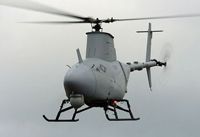
When an unmanned Navy helicopter disregarded its directions and errantly flew toward the U.S. capital last month it may have validated the concerns of many pilots, but it immediately engaged military officials who had pressing decisions to make. The Aug. 2 incident put a runaway MQ-8B Fire Scout over populated areas near busy airspace. The head of the U.S. Northern Command and NORAD, Admiral Sandy Winnefeld, was watching “very closely” as the aircraft “headed right for the heart of the national capital region.” Commanders considered their options. “Do you let it run out of gas and hopefully crash in a farmer’s field or do you actually take action to shoot it down?” Admiral Winnefeld told reporters. In the end, 20 minutes into the aircraft’s wanderings and before scrambling F-16s, operators regained control of the helicopter. But the event, combined with regulatory issues that make spontaneous domestic drone deployment impossible, have military officials reluctantly looking backward for near-term solutions.
The military is seeking more flexibility that would allow them to put drones in the air faster, but Winnefeld said lighter, slower, low-flying piloted aircraft may still provide the best alternative. Such aircraft could be employed during sports events, political conventions or inaugural activities that are not best served by high-flying, high-speed F-16s. Winnefeld said he will consider that possibility and hopes to have answers within a year. The Admiral believes drones are “where the future is going.” But for certain domestic missions, the military believes it needs what it doesn’t demonstratively have — the ability to quickly earn approval to launch drones that can be trusted not to wander off. “We can’t move quickly enough for me to solve this problem,” he said.


































